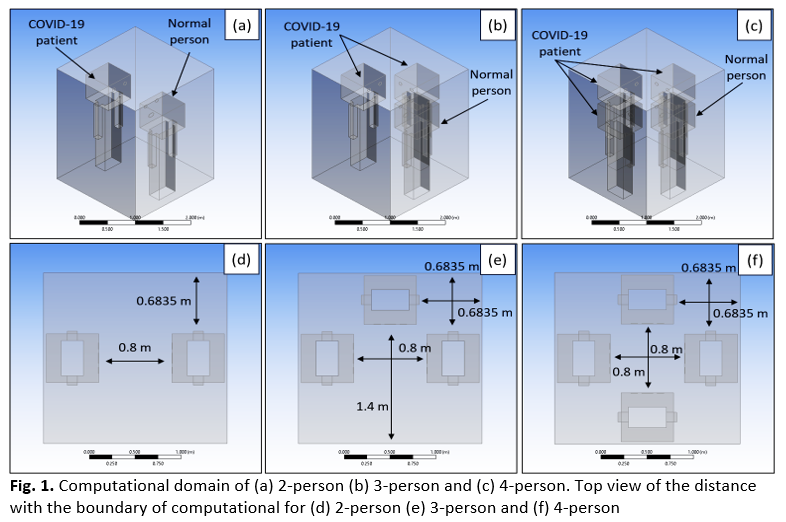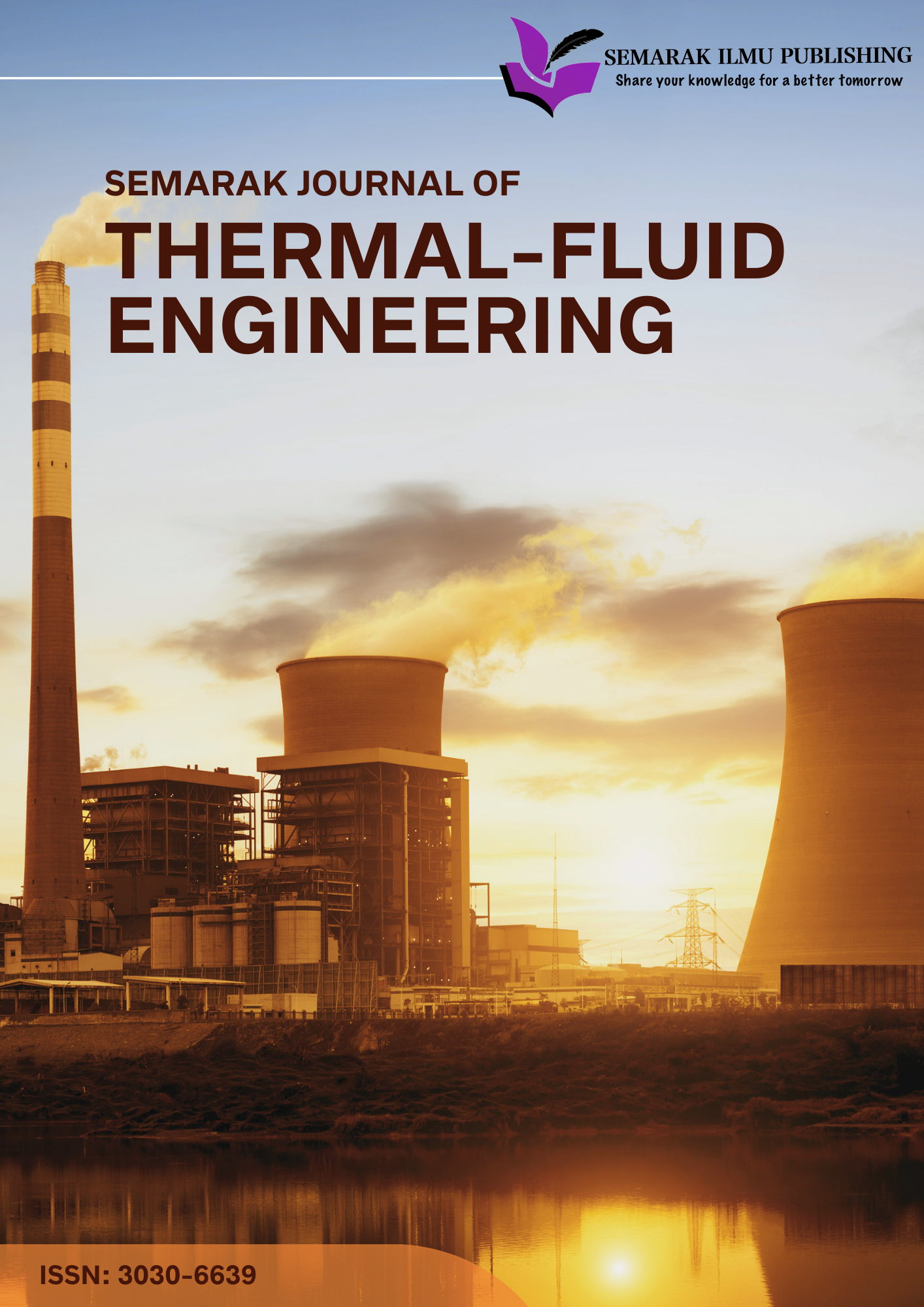Computational Modelling on Virus Spread among People in Group
DOI:
https://doi.org/10.37934/sjotfe.1.1.4356aKeywords:
COVID-19, flow characteristic, velocity, pressure distributionAbstract
The COVID-19 pandemic has made it necessary to recognise various transmission routes, including talking, as potential means of spreading the virus. Therefore, this study seeks to analyse the capability of COVID-19 virus particles to spread through talking, specifically focusing on the fluid contour and the characteristics of velocity and pressure during interpersonal communication. To compare the results, three experiments were conducted using three inlet velocities at the mouth of the pipe: 2.31 m/s, 3.19 m/s, and 4.07 m/s. These were combined with three group densities: 2-person, 3-person, and 4-person groups, using ANSYS Fluent software, resulting in nine cases in total. The findings revealed that the velocity rate of the flow was high during the initial stages of talking and declined with the distance of flow. The chances of virus transmission were higher in situations where participants interacted with more people, particularly when three patients with COVID-19 were conversing. From the study, it was established that virus transmission increases with the number of people talking and decreases with the distance between them in a conversation, which underlines the importance of social distancing.









